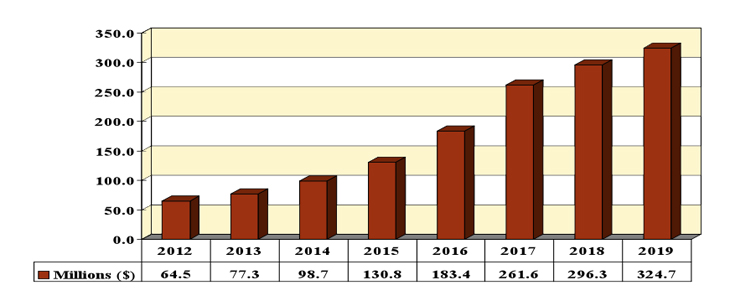The integration of LEDs into biophotonics and medical science devices is set to increase in value by a multiple of five over the coming six years, according to a new forecast by ElectroniCast, Upper Lake, CA, USA. Earlier this week, the market analyst firm announced the release of its new market study of the global consumption of packaged LEDs used in biomedical systems.
The report states, “The global consumption value of LEDs in selected biophotonic and medical devices in 2012 was $64.5 million. The consumption value is forecast to increase at an average annual growth rate of 26 percent to $324.7 million in 2019, with strong quantity growth partially offset, by a decline of average prices."
This particular LED market is segmented into the following sub-application categories: sensing/detection and analytical/monitoring; photo-therapy/sanitation/cell regeneration/curing; and instrumentation light source and imaging.
According to the ElectroniCast report, sensing/detection and analytical/monitoring applications represent over 60% of the worldwide consumption value of packaged LEDs in the selected and biophotonic and medical science devices in 2013, followed by the photo-therapy/sanitation/cell regeneration/curing application sector. The instrumentation, light source and imaging end-user application area is forecast to increase at an average annual growth rate of 27 percent.

Red shift
The market data for are also segmented by the following colors and types: red, green, blue, white, multiple color/multiple chip, UV and “other”. Red LEDs (including visible red, infrared/IR and near-IR), in 2012, represented a 50 percent share of worldwide marketplace of LEDs in medical and biophotonic devices. However, by 2019, the market share for Red LEDs is forecast to drop substantially, as most of the other color categories increase in value at a faster clip during the 2012-2019 timeframe.
By territory, the Americas region currently commands well-over 40 percent share of worldwide market in 2013; however the both the EMEA region and the APAC region are forecast for faster growth rates. Electronicast also noted that the market forecast data in its report refer to consumption for a particular calendar year; therefore, the data are not cumulative.





